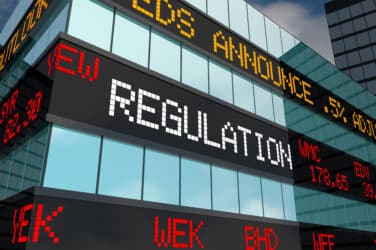So-called dark pools are under pressure from regulators to disclose more information about their operations, which market participants and rival exchange operators say would help their customers make better trading decisions while also strengthening market structure more broadly.
The catch is that dark pools’ value proposition lies in shielding some information about trade orders from the view of all market participants, at least until execution. So, only so much disclosure can be mandated without undermining the business model.
Earlier this week, the U.S. Securities and Exchange Commission took a first step by proposing new rules to enhance operational transparency and regulatory oversight of alternative trading systems, including dark pools. Disclosures, filed via Form ATS-N, would include information regarding trading, the types of trade orders and market data used, as well as execution and priority procedures.

Adam Sussman, Liquidnet
If formally approved by the SEC, the proposals will be put out for public comment. Given intense interest in the dark-pool space, there will be no shortage of feedback.
Already noted is that the SEC does not include non-ATS dark-liquidity pool operators in its proposals.
“I would have expected them to include these other non-registered dark pools as part of this rule and make it all public,” said Adam Sussman, head of market structure at Liquidnet. “Why only include the ATSs? Maybe when we read the final version of the rule, we’ll find that is the case. But it was not in the rule highlights that I saw.”
Unlike ATS platforms, in which users may trade with other users in a multilateral fashion, non-ATS dark-liquidity pools, or ‘ping pools,’ escape ATS regulations since users only interact with the pool’s operator, according to Sussman.
However, the Financial Industry Regulatory Authority recently received SEC approval to start gathering and publishing the same trade volume data for non-ATS dark-liquidity pools as it does for ATS platforms, which started in May 2014.
This data would be published with a one-month delay and Finra will aggregate the data from non-ATS dark-liquidity pools that execute fewer that 200 non-ATS transactions per day on a non-attributable basis, according to Finra officials.
The regulator has yet to announce when it plans to start gathering the additional data in an upcoming regulatory notice.
“After Finra starts posting its updated data, it may give the SEC the information that would inform additional rules moving forward,” Sussman suggested.
In the meantime, the new rule proposal formalizes what the market has already been doing, or at least the significant part of the market has been doing. “This will put it into stone and have some of the laggard ATS operators come into the fold with those of us who have been abiding by the spirit of the rule that the SEC is putting in place,” Sussman said.
Feature image by BillionPhotos.com






